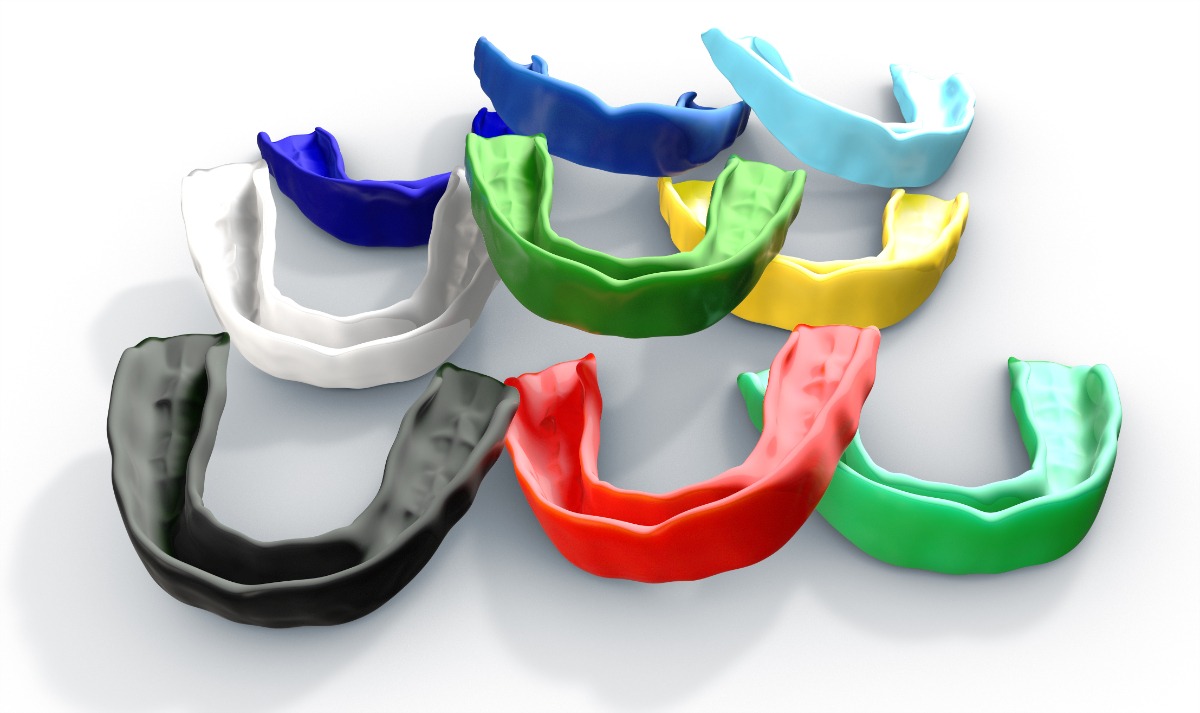Life with braces probably took a little getting used to with all of the places for food to get stuck and remembering which foods were off limits, but what about braces and the activities that require mouth protection? While it may seem like your braces have given your teeth an added layer of protection, they are meant to align your smile, not protect it, so you will still need to wear a protective mouth guard to ensure the hard work you and Dr. Freelove have put it doesn’t take a damaging, and likely painful, set back. You’ll have to toss that old mouthguard you used before putting your braces on, but don’t worry. Our Freelove Orthodontics and Smile Design team have all the info on braces and mouthguards and what you need to know to get back in action.
Sports and Dental Injuries
Most parents will agree that putting a child in a sport is great for many reasons, developing social and motor skills, promoting regular exercise disguised as fun, and even teaching essential life skills like time management and the benefits of sticking with something. But as the parent, you are also tasked with more than just chauffeuring MVPs to practice and keeping water bottles full.
Your child’s dental health is a significant concern when the possibility of a ball or body part to the mouth increases with sports. Whether your child has metal braces, a retainer, or clear aligners like Invisalign, their mouth needs to be adequately protected to avoid painful injuries and permanent mouth damage. And you may have to remind them that aligners are not mouthguards and do not actually provide their teeth protection.
Sports-related dental injuries account for 40% of all dental injuries in the United States. You may think high-speed sports involving a lot of contact and collision are the only concern for mouth injuries, but accidents always happen. A fall in a solo sport like skateboarding can result in a chipped tooth or broken bracket.
Freelove Orthodontics and Smile Design patients can still play sports like usual during treatment but check your appliances and mouth immediately if you have an accident during your athletic activity. If the instruments appear damaged or the teeth loosened, schedule an appointment for repair as soon as possible.
When we evaluate and treat dental injuries, a quick assessment and early treatment is our primary goal. The most common injuries are tooth fractures, commonly referred to as a ‘chipped tooth,’ and soft tissue lacerations or cuts on your gums, tongue, or cheeks due to direct impact to or with the area. While inspecting for these types of injuries, we also check the motion of your jaw to address any jaw dislocation.
Some patients may experience a more profound oral injury such as luxation. A tooth may become displaced but still in the socket or even an avulsion in which the tooth becomes wholly dislocated.

Mouth Protection through Mouthguards
According to a survey by the American Association of Orthodontists, 99% of parents with children playing organized sports feel mouthguards should be required to play, but close to 40% of those parents said their child never wears one for practice or games.
Getting a kid to wear a mouthguard may seem as difficult as getting them to eat green vegetables. Still, it is one of the most inexpensive ways to protect your child’s teeth, tongue, gums, and cheeks from trauma during extra-curricular activities.
Orofacial and dental injuries are a risk for participants of all ages, genders, and skill levels during organized and unorganized sports at both recreational and competitive levels. While most dental injuries are sustained during collision and contact sports, they are also prevalent in limited-contact, non-contact, and high-velocity activities.
Choosing and Caring for your Mouthguards
As with any other decision you are faced with making to keep your kids safe, mouthguards come in many different options, but according to the ADA Council of Scientific Affairs and Council on Advocacy for Access and Prevention, an ideal mouthguard should:
- Be adequately fitted to the wearer’s mouth and accurately adapted to their oral structures
- Be made of resilient material approved by the FDA and cover all remaining teeth on one arch
- Stay in place comfortably and securely
- Be physiologically compatible with the wearer
- Be relatively easy to clean
- Have high-impact energy absorption to reduce or limit transmitted forces upon impact
If you are currently undergoing orthodontic treatment, consult with Dr. Freelove to ensure the mouthguard will fit over your appliances and not damage the device or harm your mouth if an impact occurs.
You will know you have a good fit if it is comfortable, offers adequate coverage, and doesn’t interfere with speaking or breathing. The three most common types of mouthguards are stock or pre-made, “Boil and Bite,” and custom-made. Take a look at the uses and differences below.
Pre-Made Mouthguards
The pre-made option is the most common mouthguard due to availability since it’s what you are likely to find in a sporting goods store. These mouthguards come in various sizes and colors to suit as many wearers as possible. The stock mouthguard is considered the least effective option because it has a generic design that is not adapted to any particular mouth giving an improper fit and requires the mouth to be shut to keep it in place.
“Boil-and-Bite” Mouthguards
Mouth-formed mouthguards are commonly referred to as “boil-and-bite” because they are designed to be warmed in water briefly to become permeable and then cooled slightly to be placed in the mouth and bitten down to create a customized fitting. These can also typically be found in sporting goods stores or ordered online. A dental professional may help facilitate the proper forming around dental appliances in some cases. Follow all manufacturer’s instructions precisely to ensure adequate heating and molding of the thermoplastic material, and avoid improper shaping creating a poorly fitted device with diminished protection.
Custom-made Mouthguards
Custom mouthguards are fabricated in a dental office or lab from individual patient impressions using thermoforming techniques to be fully customized and provide wearers the best fit to adapt to your mouth while still being the most effective. While this is often the most expensive option for oral protection, the balanced occlusion and maximized tooth contact significantly reduce the risk of the mouthguard becoming displaced during high-impact activity. Once the mouthguard no longer fits, a new impression is needed before the replacement can be made.

Protect your smile investment with a mouthguard from Freelove Orthodontics and Smile Design!
Our experienced team at Freelove Orthodontics and Smile Design in Kent knows your child’s safety and smile are important, and we are here to help with both! Here, patients of all ages are seen as individuals whose holistic health is equally vital to your orthodontic treatment plan. Our goal is not just to give you the smile of your dreams; we want you to leave our office knowing you got the best possible care after every appointment.
We offer a wide range of modern orthodontic treatment options making the right choice for your lifestyle and smile needs much easier. Schedule your FREE consultation today if you’re interested in starting your smile journey. And don’t forget to check out our Facebook and Instagram pages to see what our team has been up to recently.
